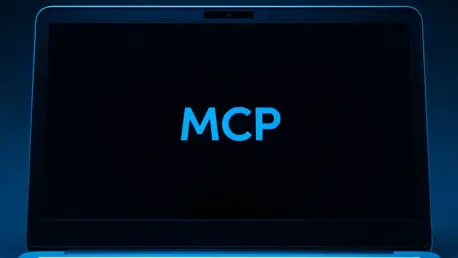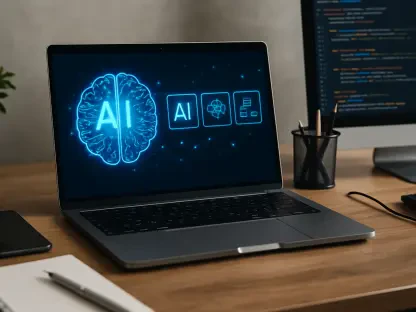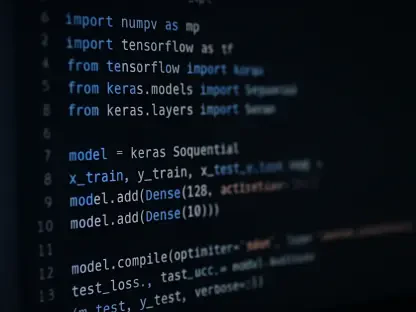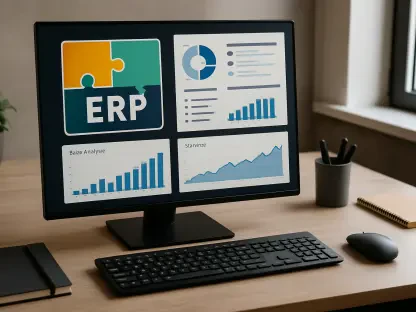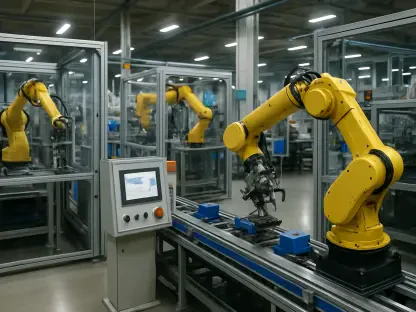Imagine a world where artificial intelligence systems, despite their immense potential, struggle to connect with the vast troves of data they need to deliver actionable insights, a reality many enterprises face today. The complexity of integrating large language models with diverse data sources creates bottlenecks that hinder innovation. Enter the Model Context Protocol (MCP), an open standard that promises to bridge this gap by standardizing connections between AI models and data repositories. This review dives deep into MCP’s evolution, its technical architecture, real-world applications, and the challenges it must overcome to reshape the AI landscape. By exploring its current state and future potential, a comprehensive picture emerges of how this protocol is poised to transform enterprise AI solutions.
Understanding Model Context Protocol (MCP)
At its core, MCP serves as a universal framework designed to simplify the interaction between AI models, particularly large language models, and a myriad of data sources. By establishing an open standard, it tackles the notorious MxN integration problem, where multiple models must connect with numerous tools and repositories, often requiring custom solutions for each pairing. MCP’s approach streamlines this process, fostering scalability and ensuring that AI systems can operate across diverse environments without constant reconfiguration.
The significance of MCP extends beyond mere technical convenience. Its client-server architecture acts as a foundational layer for interoperability, enabling seamless communication in complex ecosystems. This design not only reduces development overhead but also positions MCP as a critical enabler for enterprises looking to harness AI at scale, as well as for developers seeking to build adaptable solutions in dynamic technological landscapes.
This protocol’s relevance is particularly pronounced in enterprise settings, where data silos and legacy systems often impede progress. By providing a standardized method to access and utilize information, MCP empowers organizations to unlock the full potential of their AI investments, paving the way for more intelligent and responsive systems across various sectors.
Key Features and Technical Components of MCP
Standardized Client-Server Architecture
Central to MCP’s functionality is its client-server architecture, which operates as a universal connector for AI systems. Much like a standardized hardware interface, this design allows multiple language models to interact effortlessly with an array of data sources and tools through MCP clients and servers. The result is a dramatic reduction in integration complexity, as developers no longer need to craft bespoke solutions for every connection point.
This architecture is implemented with a focus on flexibility, ensuring that it can accommodate a wide range of systems, from cloud-based platforms to on-premises databases. Its technical robustness enables smooth data flow, minimizing latency and enhancing the efficiency of AI operations. Such standardization is a game-changer, particularly for organizations managing diverse tech stacks.
The impact of this design is evident in its ability to simplify workflows. By providing a consistent interface, MCP reduces the learning curve for developers and ensures that AI applications can scale without the burden of constant adaptation, making it an indispensable tool for modern tech ecosystems.
Enterprise-Grade Functionality and Security
MCP is tailored to meet the stringent demands of enterprise environments, where reliability and security are paramount. Features such as robust error handling and real-time monitoring ensure that systems remain operational even under high stress, while built-in compliance mechanisms help organizations adhere to regulatory standards. These elements make MCP a trusted solution for large-scale deployments.
Security is another cornerstone of MCP’s design, with protocols in place to safeguard sensitive data during transmission and storage. This focus is critical for industries handling confidential information, where breaches can have severe consequences. Leading platforms have already integrated MCP to bolster their security frameworks, demonstrating its practical value in production settings.
Beyond technical safeguards, MCP’s enterprise-grade functionality supports seamless integration into existing workflows. This adaptability ensures that businesses can adopt the protocol without overhauling their infrastructure, minimizing disruption while maximizing the benefits of enhanced AI connectivity and performance.
Current Trends and Innovations in MCP Adoption
The adoption of MCP has gained significant momentum, particularly among enterprises seeking to streamline their AI operations. Major organizations are increasingly integrating the protocol into their systems, driven by its promise of scalability and reduced integration costs. This trend reflects a broader industry shift toward standardized frameworks that prioritize efficiency over fragmented, custom-built solutions.
A notable development is the surge in open-source contributions surrounding MCP. Community-driven efforts have led to the creation of numerous server repositories and software development kits in languages like Python and TypeScript, making the protocol accessible to a wider audience. This collaborative spirit is accelerating innovation, as developers tailor MCP to niche use cases and share their advancements with the broader ecosystem.
Emerging trends also point to customization as a key focus area. Industries are adapting MCP to address specific challenges, from optimizing internal business tools to enhancing academic research workflows. This flexibility, coupled with growing support from tech giants and grassroots contributors alike, underscores MCP’s potential to evolve in response to diverse needs over the coming years.
Real-World Applications and Use Cases of MCP
MCP’s versatility shines through in its wide-ranging applications across multiple sectors. In enterprise settings, companies leverage the protocol to power internal assistants that access proprietary data and customer relationship management systems. Such implementations enhance decision-making by providing AI systems with comprehensive, real-time insights, as seen in deployments by leading firms.
Beyond business, MCP facilitates complex multi-tool agent workflows, enabling AI systems to coordinate tasks across disparate resources. For instance, agents can retrieve documents, interact with messaging platforms, and perform advanced reasoning, all through a unified interface. This capability is proving invaluable for organizations managing distributed operations that require seamless coordination.
In academia, MCP supports innovative tools for research, such as semantic search applications integrated with platforms like Zotero. Researchers benefit from AI-assisted literature reviews and data analysis, streamlining workflows that were once labor-intensive. These diverse use cases highlight MCP’s ability to adapt to varying demands, cementing its role as a transformative technology in both practical and intellectual spheres.
Challenges and Limitations Facing MCP
Despite its promise, MCP encounters several hurdles on the path to widespread adoption. Technical challenges, particularly in integrating with outdated legacy systems, pose significant barriers for organizations with entrenched infrastructure. These compatibility issues often require substantial resources to resolve, slowing down implementation in some sectors.
Regulatory concerns also loom large, especially regarding data security and privacy. As MCP facilitates the flow of sensitive information across systems, ensuring compliance with global standards remains a complex task. Enterprises must navigate these legal intricacies to avoid potential liabilities, which can deter adoption among risk-averse entities.
Market barriers further complicate MCP’s reach, particularly for smaller organizations lacking the budget or expertise to implement sophisticated AI protocols. While efforts by major players and the open-source community aim to democratize access through tools and documentation, addressing these disparities remains an ongoing challenge that could shape the protocol’s long-term impact.
Future Outlook for Model Context Protocol
Looking ahead, MCP is poised for significant advancements that could further solidify its position in AI infrastructure. Anticipated developments include enhanced support for emerging technologies, such as next-generation AI models and edge computing environments. These innovations could expand MCP’s applicability, making it a cornerstone for cutting-edge systems.
Broader industry adoption is another key expectation, with more sectors likely to embrace MCP as awareness of its benefits grows. Potential breakthroughs in interoperability standards may also emerge, driven by collaborative efforts between tech leaders and community contributors. Such progress could redefine how intelligent systems interact with data on a global scale.
The long-term implications of MCP extend to societal impacts, as it enables more connected and efficient AI applications across domains like healthcare, education, and governance. As the protocol matures, its role in shaping resilient and adaptable technological frameworks will likely become even more pronounced, influencing how society leverages AI for progress.
Final Thoughts on MCP
Reflecting on the journey of MCP, it becomes clear that this protocol has carved a pivotal niche in the realm of AI integration, offering a robust solution to longstanding connectivity challenges. Its strengths in scalability and interoperability stand out as defining features that empower enterprises and developers alike. The diverse applications, from business workflows to academic research, underscore its adaptability during this period of rapid technological growth.
Looking back, the challenges of legacy system integration and regulatory hurdles have tested MCP’s resilience, yet the community’s response through open-source innovation has provided a foundation for improvement. For those considering adoption, the next step involves evaluating implementation partners like K2view or Microsoft to align with specific operational needs. As the ecosystem continues to evolve, staying engaged with emerging tools and updates proves essential for maximizing MCP’s potential in transforming AI capabilities.
